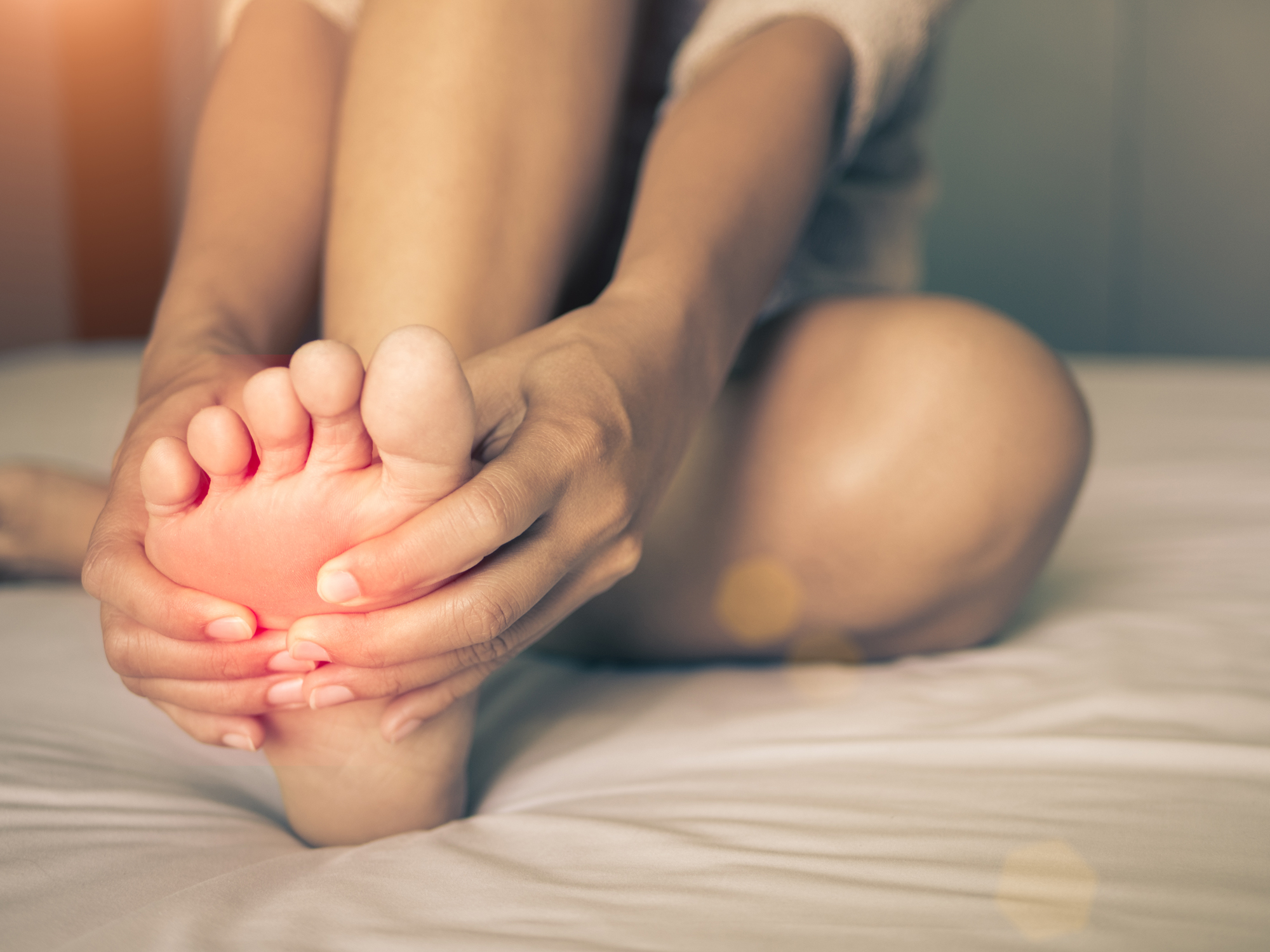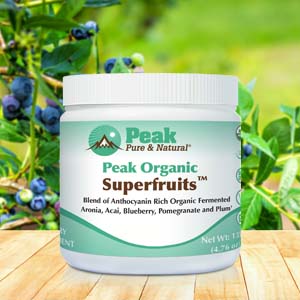Get Easy Health Digest™ in your inbox and don’t miss a thing when you subscribe today. Plus, get the free bonus report, Mother Nature’s Tips, Tricks and Remedies for Cholesterol, Blood Pressure & Blood Sugar as my way of saying welcome to the community!
The painful condition that increases your heart, stroke and kidney risks

What do Beethoven, Benjamin Franklin, Michelangelo and Leonardo DaVinci have in common (besides being gifted artists and thinkers)? They all suffered with a painful condition that was originally called the ‘disease of kings.’ You know it as gout.
It’s true that famous leaders such as Henry VIII and Alexander the Great endured this disease, but it’s definitely not limited to royalty…
Today, more than 8.3 million Americans are suffering the pain and bodily damage of this condition. That’s seven times the number of sufferers in the late 1960s.
Why should that be, when there are numerous natural remedies and lifestyle changes that can help prevent it?
And that’s something we should all be interested in doing, since gout can be a painful sign of heightened stroke risk. So, clearly, this is a painful condition with real consequences…
Gout: the common man’s (and woman’s) disease
The word gout is derived from Latin and means ‘a drop.’ It was thought that excess amounts of ‘humors,’ or body fluids, said to determine a person’s well- being, ‘dropped’ into a particular joint and caused pain.
Gout is a form of arthritis caused by the buildup of uric acid crystals in the joints. It’s usually the foot that’s affected, since it has numerous joints. But the pain and swelling of gout can also occur in the ankles, hands, wrists, knees, fingers or elbows.
Uric acid is part of the body’s waste, the product of diet as well as normal cell breakdown. It is normally excreted in urine.
But when gout is present, the body does not excrete enough. Nor does it metabolize protein properly. So, a buildup of uric acid in the blood occurs. Hard crystals build up in the joints and appear as nodules called tophi.
Who gets gout?
The majority of people who have gout are men ages forty to fifty. For women, diagnosis usually occurs after menopause. Estrogen levels drop, and the body is less able to remove uric acid from the blood.
Aside from age, other factors put you at higher risk for gout. These include:
- Obesity
- Taking diuretics (‘water pills’ to reduce blood pressure)
- Receiving a transplanted organ
- A joint injury
- Eating red meat and shellfish
- Family history of gout
- Dehydration
- Type 2 diabetes
How do I know I have gout?
More often than not, gout begins in the big toe or other foot joints. It involves a sudden, severe episode of pain, accompanied by:
- Stiffness
- Swelling
- Redness
- Tenderness
Flareups usually occur at night and can get so severe that even the lightest touch to the skin is agonizing. Fever can also be part of a gout attack.
In a person who has gout, a flareup can be triggered by:
- Drinking alcohol
- Eating purine-rich foods such as red meat
- Long periods of sitting or lying, such as after surgery or illness
- Chemotherapy
Progress of the disease
Doctors use four stages to classify the severity of gout.
Stage 1 – Asymptomatic hyperuricemia. As the name implies, no symptoms have appeared, but uric acid levels are above the desired 6.0 mg/dl. At this stage, healthy lifestyle choices and monitoring of uric acid levels may prevent an eventual attack.
Stage 2 – Acute gout attack. Crystals have begun developing in joints, causing intense pain, swelling and redness. The pain normally resolves in three to ten days.
After a first attack, it’s crucial to seek medical attention for a diagnosis. This is also the time to make changes to your diet and routine that can help head off another flare up, which may not occur for months or years.
Stage 3 – Intercritical gout. This is the symptom-free period between gout flares when uric acid crystals are silently building up in preparation for the next attack. Another more severe attack is certain, unless uric acid levels are controlled.
Stage 4 – Chronic tophaceous gout. A chronic, debilitating condition now exists. Destruction of bone and cartilage causes deformed joints. In addition, the chronic inflammation of gout can lead to kidney damage.
Treating gout pain naturally
Doctors normally recommend NSAIDs or corticosteroids or prescribe allopurinol (a uric acid reducer) or colchicine (an anti-inflammatory).
NSAIDs will only increase the likelihood of kidney disease already present in gout sufferers, so they are not the best choice. Fortunately, there are numerous natural alternatives for treating gout pain.
Capsaicin cream. Capsaicin is a natural anti-inflammatory and pain reducer found in chili peppers
Krill oil. Studies show that this oil derived from sea animals is rich in Omega 3 and can reduce arthritic symptoms.
Ginger. This root is well-known for its anti-inflammatory properties. Ginger tea or raw ginger work best.
Bromelain. Eating fresh pineapple will give you a good dose of this anti-inflammatory enzyme.
Essential oils. Borage, evening primrose and black currant oils contain gamma-linolenic acid (GLA), a fatty acid known to provide pain relief.
Here are a few other natural arthritis relievers you can try.
The gout diet: what to eat, what to avoid
When you have gout, certain foods are absolutely crucial, while others should be avoided at all costs.
Do NOT eat:
- Processed foods. They’re just bad for you in every way, but if you have gout, the high-fructose corn syrup and additives they contain will set you up for gout flareups.
- Foods high in purine. Purine is a protein found in your body and in many foods. It breaks down into uric acid, so if you have gout, you don’t want to overdo these otherwise healthy foods: shellfish, liver, mushrooms, asparagus, cauliflower, lentils and spinach.
- High fructose corn syrup. Soft drinks and fruit juices are full of it, as are breakfast cereals and even breads.
DO eat:
- Blueberries, cherries and blackberries. These and other dark or purple fruits and vegetables contain anthocyanins, powerful antioxidants that fight inflammation naturally.
- Healthy fats. Coconut oil, olives and olive oil and avocados as well as many nuts will help regulate your insulin levels. People with type 2 diabetes are more likely to get gout, and vice versa.
- Ginger, cinnamon, rosemary, turmeric and ashwagandha are potent anti-inflammatory herbs.
- Potassium-rich foods. Potassium citrate, found in foods like avocados, papayas, Brussels sprouts and broccoli may help neutralize uric acid.
Editor’s note: Have you heard of EDTA chelation therapy? It was developed originally to remove lead and other contaminants, including heavy metals, from the body. Its uses now run the gamut from varicose veins to circulation. Click here to discover Chelation: Natural Miracle for Protecting Your Heart and Enhancing Your Health!
Sources:
- Gout & Uric Acid Education Society— gouteducation.org
- What is Gout? — Arthritis Foundation
- 6 Risky Foods To Avoid With Gout (No. 5 Was Unexpected) — dietvsdisease.org
- The Link Between Diabetes and Gout — WebMD














